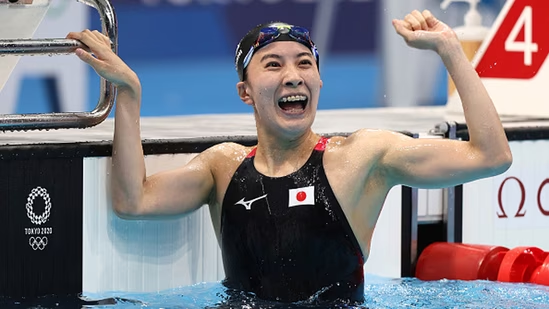Tokyo 2020: The Sun rises in the pool, again
Every Olympic success has a backstory and a cascading effect that exemplifies the power of sport to inspire. Each medal is steeped in history and plants a seed for the future.

Yui Ohashi, 25, was a relative unknown outside her country until last week. On Wednesday, she pulled off a blinder in the final 15 metres to cement her reputation as the world’s foremost individual medley (IM) swimmer by winning the 200m gold at her first Olympics. Three days ago, she had stunned another fancied field to win gold in the 400 IM.
Ohashi is not the first Japanese swimmer to have snuck up on the opposition at an Olympics – teenager Kyoko Iwasaki did it in 1992, Ai Shibata and “Frog King” Kosuke Kitajima in 2004, and Kosuke Hagino in 2016.
The tradition, it turns out, goes back longer than that. To almost a century ago.
Also Read | Tokyo Olympics: My confidence has gone up, says Sindhu ahead of knockout ties
Yoshiyuki Tsuruta, the second of 12 children, was born in 1903 in a village in Kagoshima on the southern edge of Kyushu, the southernmost of Japan’s major islands. He started working in the Japanese railways at 17, and joined the Imperial Navy at 21 where he began training as a swimmer.
In 1928, recognised within the navy as the best breaststroker in Japan, he was sent to the Amsterdam Olympics, where world record holder Erich Rademacher of Germany was the favourite to win. In the 200m final, Tsuruta surprised Rademacher by going stroke for stroke with him as the two pulled away from the rest of the field. Tsuruta won comfortably in the final length, beating the German by over two seconds to give Japan its first swimming gold.
But this did not make Tsuruta an overnight sensation in his home country, at least not in his mind. He returned to life as usual, started pursuing a law degree at Meiji University in central Tokyo, and kept on swimming.
Also Read | Village voices: Punches fly at the temple of sumo
Tsuruta didn’t realise the impact he’d made until the 1932 Games in Los Angeles. This time when he won gold again in the 200m breaststroke, his compatriot Reizo Koike took silver. Japanese men won five of the six golds on offer in the pool, including the 4x200m freestyle relay. Inspired by Tsuruta, they were now a swimming powerhouse.
Though the navy man did not go to the 1936 Berlin Games, the tradition continued. Japan won four more golds in the pool -- one of them by a woman, Hideko Maehata, not surprisingly in the 200m breaststroke.
But global politics would ensure that Japan’s run as the world’s foremost swimming nation was short-lived.
The Second World War consumed the next two Olympics, and Japan, reeling from the bombings of Hiroshima and Nagasaki, returned to the Games, gingerly, in 1952. It was only at Tokyo 1964 that Japan began expressing itself once again as a nation reborn.
Though it would never quite regain its status in the pool – the medals now came from judo, wrestling and gymnastics – every few years a swimmer popped out of nowhere to surprise the Americans and the Australians, as if to keep Tsuruta’s legacy alive.
Masaru Furukawa won the 200m breaststroke in 1956; Nobutaka Taguchi the 100m breaststroke in 1972 at a time when the swim world was consumed by the rivalry between American John Hencken (who was relegated to bronze) and Scotsman David Wilkie (8th); and Daichi Suzuki stunned American David Berkoff in the 100m backstroke at Seoul 1988. Iwasaki was 14 when she struck gold in 1992, and Kitajima ruled the following decade as the greatest breaststroker in history – he won the 100m and 200m at Athens 2004, and then again at Beijing 2008.
At Tokyo 2020, it was Ohashi’s turn. She was born in 1995 in Hikone, on the eastern bank of the picturesque Lake Biwa. Still uncertain about a career in sport, she joined Tokyo University in 2014, where the swim programme was run by national coach Norimasa Hirai. Over the last seven years, she’s had her fair share of trouble. From a last place finish in the Japanese trials in 2015 to an illegal kick between backstroke and breaststroke in the IM at the 2019 worlds, to battling depression at different times along the journey.
“I’d almost stopped swimming… It feels surreal,” she said after the double.
Like Tsuruta 93 years ago, Ohashi is now a pioneer in her own right - the first Japanese woman to win multiple golds at the same Olympics. Not just in the pool, in any discipline.
This is how traditions are born.
Disclaimer: The copyright of this article belongs to the original author. Reposting this article is solely for the purpose of information dissemination and does not constitute any investment advice. If there is any infringement, please contact us immediately. We will make corrections or deletions as necessary. Thank you.







